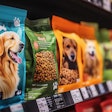
As novel ingredients are increasingly added to pet food diets, more hazards from these ingredients also emerge, according to Tim Lombardo, senior director for food consulting services at EAS Consulting Group, who spoke April 30 at 2024 Petfood Forum in Kansas City, Missouri.
These “hazards of emerging concern” that arise in the next several years will be mostly related to food fraud, he said.
“As we have novel ingredients, we have more products coming from foreign manufacturers using those ingredients,” Lombardo said. “Food fraud tends to be more prevalent not only in pet food but also in humans. And so, for those manufacturers who manufacture human-grade pet foods, a lot of the same food fraud concerns for human food are transferred over to pet food as well.”
He defined food fraud as hazards created when the intent is economic gains.
“It's not to cause harm. It's to cause profits for the ingredient manufacturers. However, some of the unintended results of fraud are illness or even death of a consumer, whether it's a pet, or a commercial animal or human,” he said.
There are very few incidents of food fraud that focus primarily on the pet industry, but it seems to happen more often, as more human-grade ingredients are included in pet food.
He cited these six ingredients as hazards of emerging concern:
Wheat gluten: Melamine might be added to wheat gluten to artificially increase protein content. Co-contaminants of melamine, the result of incomplete reactions during production of melamine, include cyanuric acid, ammelide and ammeline.
“These all can cause inadequate protein absorption in the animal,” Lombardo said.
Turmeric: This ingredient, which enhances the brightness of color, can be contaminated with lead chromate.
“There's not enough information to know what that does to our pets compared to human consumption,” he said.
Chicken meal: This ingredient might be substituted for real chicken and may include additional unknown microbiological, chemical and physical hazards.
Milk-based products: These can be adulterated with reconstituted milk powder, urea, rennet, oil, detergent, caustic soda, sugar, salt and skim milk powder. Or, it might be watered down and then supplemented with melamine to artificially raise the apparent protein content and hide dilution.
Honey: One of the most fraudulent ingredients, honey might be adulterated with corn syrup and colorants.
Listeria in raw pet food: While Salmonella is primary pathogen of concern for many pet foods, Listeria monocytogenes is of rising concern, especially in raw pet foods.
“There's an increase in … the popularity of raw pet food. It's very difficult to produce a product that is pathogen free,” he said.


















